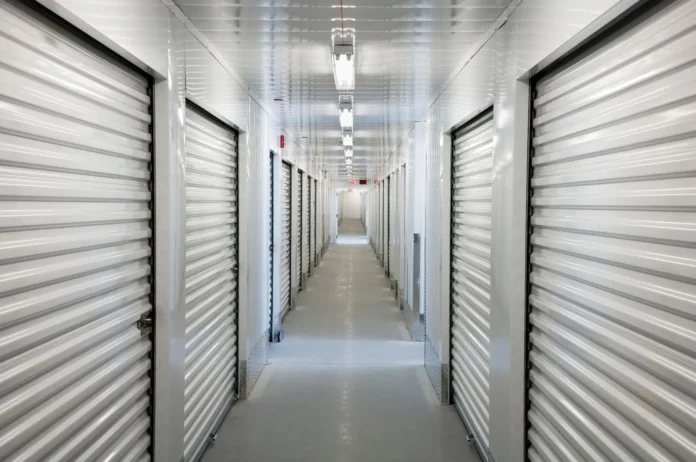In today’s mobile world, where people relocate frequently and run businesses from home, the need for secure self-storage is greater than ever. Whether you’re storing furniture, important documents, electronics, or commercial inventory, one concern is universal: is my stuff truly safe?
This guide explores the multi-layered security infrastructure, advanced monitoring systems, and rigorous protocols that modern, high-quality storage facilities use to protect your possessions 24 hours a day, 7 days a week.
Why Storage Security is Non-Negotiable
The items we store today often hold immense value—not just monetary, but also sentimental and operational. From confidential business records and expensive equipment to irreplaceable family heirlooms, secure storage is a critical need.
Risks at poorly secured facilities can include:
- Theft is due to inadequate surveillance and access control.
- Environmental Damage like mold, flooding, or pest infestation.
- Fire Hazards from faulty electrical systems or poor maintenance.
- Unauthorized Access resulting from weak entry protocols.
Choosing a facility with a robust, modern security system is one of the most important factors in the decision-making process.
The Multi-Layered Security Philosophy
Leading storage providers operate on a principle of layered protection. This “defense in depth” strategy ensures that multiple security measures work in concert, so if one layer were ever compromised, others remain fully active.
This comprehensive approach typically integrates:
- Physical Security: Structural integrity and barriers.
- Electronic Surveillance: Cameras and sensors.
- Access Control: Gated entry and unit-specific locks.
- Environmental Monitoring: Climate, fire, and water detection.
- Operational Protocols: Trained staff and procedures.
1. 24/7 Video Surveillance and Active Monitoring
Top-tier storage facilities are equipped with high-definition CCTV cameras that cover all critical areas: entry and exit points, driveways, hallways, elevators, and individual unit corridors. The best systems go beyond simple recording to include active, real-time monitoring.
Key features of advanced surveillance systems:
- Continuous recording with live video feeds accessible to security personnel.
- Motion-activated alerts that trigger immediate review.
- Comprehensive camera placement to eliminate blind spots.
- Secure, off-site storage of footage for 60-90 days.
- Integration with other security systems like access control.
2. Advanced Unit Locks and Access Logs
While traditional padlocks are common, modern facilities often offer upgraded smart locking systems. These digital locks are not only physically robust but also integrated into the facility’s digital security network, creating an access log for every entry and exit.
Capabilities of smart storage locks:
- Tamper-proof mechanisms that trigger an alarm if disturbed.
- Mobile app control, allowing for keyless entry.
- The ability to generate temporary access codes for guests or couriers.
- Detailed usage history showing exactly when a unit was accessed.
3. Multi-Stage Access Control
Gaining entry to a secure facility is a controlled process. It often begins with a unique personal identification number (PIN), biometric scan, or QR code just to enter the gate or main building. This authorization is required to access interior hallways as well.
Sophisticated access systems include:
- Encrypted PINs or biometric data (fingerprints, facial recognition).
- Time-limited access codes for visitors or delivery services.
- Automated logging of every entry and exit, tied to a specific user.
- The ability to remotely grant or revoke access instantly.
4. Comprehensive Environmental Monitoring
Security isn’t just about theft prevention; it’s about protecting your items from all forms of damage. Modern facilities employ a network of sensors to monitor the storage environment.
These systems typically monitor for:
- Fire and Smoke: With automated alarms that alert both on-site staff and local fire departments.
- Climate: Humidity and temperature sensors in climate-controlled units to protect sensitive items like wood, art, or wine.
- Water: Leak detection systems in ground-floor units or basements to prevent flood damage.
- Pests: Regular pest control services and ultrasonic deterrents.
5. The Human Element: On-Site Staff
Technology is powerful, but it works best when complemented by trained professionals. The presence of dedicated, on-site managers is a hallmark of a secure facility.
Staff responsibilities often include:
- Conduct regular patrols and visual inspections of the property.
- Verifying customer identities and managing the check-in process.
- Responding immediately to security or environmental alerts.
- Serving as a first point of contact with customers and emergency services.
6. Transparency: Audit Trails and Incident Response
In a secure self storage facility, every action is recorded. A comprehensive digital audit trail logs who entered the property, which unit they accessed, and how long they stayed.
This data is crucial for:
- Providing transparency to customers about access to their unit.
- Aiding investigations of an incident should occur.
- Maintaining overall facility security.
Reputable providers also have a clear incident response protocol to handle any potential security or safety issues swiftly and effectively.
7. Optional Insurance for Added Assurance
Even with the most advanced security, unforeseen events can happen. Therefore, many facilities offer optional insurance policies through trusted partners, allowing you to ensure the full value of your stored items against theft, fire, water damage, and other covered events.
8. The Customer’s Role in Security
Security is a shared responsibility. Customers can greatly enhance the safety of their belongings by:
- Using high-quality, disc-style locks that are difficult to bolt-cutter.
- Safeguarding their access codes and not sharing them indiscriminately.
- Adhering to the facility’s rules on prohibited items (e.g., combustibles, perishables).
- Keeping detailed inventory and photos of stored valuables for insurance purposes.
What to Look for in a Secure Storage Facility
When comparing options, look for these essential security features:
- Perimeter Fencing and well-lit grounds.
- Individually Alarmed Units or sophisticated smart locks.
- Documented Access Control systems with unique user codes.
- Active, Monitored Surveillance rather than passive recording.
- Climate-Controlled Options with environmental monitoring.
- On-Site Management during business hours or longer.
- Clear Policies on insurance and incident response.
Final Thoughts
Choosing a self-storage provider is ultimately an investment in peace of mind. The safest facilities don’t rely on a single solution but build a resilient ecosystem of technology, infrastructure, and human oversight. By understanding these layers of protection, you can make an informed choice and feel confident that your possessions are in a secure environment.

